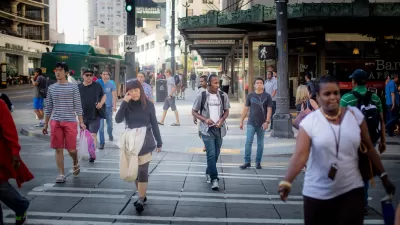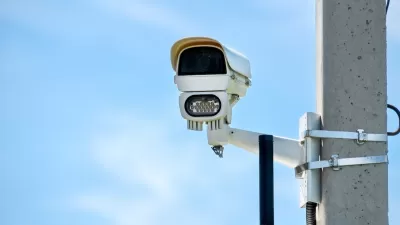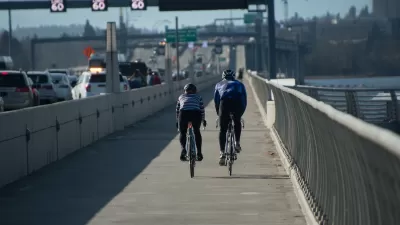Seattle is working toward its Vision Zero goals, after a year in which most people killed by drivers in the city were pedestrians.

"The number of traffic fatalities and serious injuries in Seattle dipped only slightly last year from the previous year, leaving the city far from meeting its goal of eliminating all such deaths and injuries by 2030," reports Michelle Baruchman.
"Preliminary data from the Seattle Department of Transportation (SDOT) show 14 people died on city streets in 2018, down from 19 in 2017. An additional 170 people were seriously injured," adds Baruchman. "Most of last year’s traffic deaths — eight — were pedestrians, four were in vehicles, one was bicycling and one was on a motorcycle."
While any news of traffic facilities is disheartening, the city's work to reduce fatalities is making progress. Fatalities are down significantly from 2006, when the city reported 33. The city is also safer than other large cities in the country, according to the Dangerous By Design report from Smart Growth America and the National Complete Streets Coalition [pdf]. The news also offers an occasion for the city to discuss future projects that will further improve traffic safety, like plans to implement signals that give pedestrians a three- to seven-second head start at intersections. "The system, called leading pedestrian intervals, makes pedestrians in the crosswalk more visible to drivers making turns," explains Baruchman. "SDOT has equipped 43 intersections with the new systems, and has applied for grants to evaluate 140 more locations."
FULL STORY: Seattle traffic deaths and injuries down slightly last year; most of the fatalities were pedestrians

Alabama: Trump Terminates Settlements for Black Communities Harmed By Raw Sewage
Trump deemed the landmark civil rights agreement “illegal DEI and environmental justice policy.”

Planetizen Federal Action Tracker
A weekly monitor of how Trump’s orders and actions are impacting planners and planning in America.

The 120 Year Old Tiny Home Villages That Sheltered San Francisco’s Earthquake Refugees
More than a century ago, San Francisco mobilized to house thousands of residents displaced by the 1906 earthquake. Could their strategy offer a model for the present?

In Both Crashes and Crime, Public Transportation is Far Safer than Driving
Contrary to popular assumptions, public transportation has far lower crash and crime rates than automobile travel. For safer communities, improve and encourage transit travel.

Report: Zoning Reforms Should Complement Nashville’s Ambitious Transit Plan
Without reform, restrictive zoning codes will limit the impact of the city’s planned transit expansion and could exclude some of the residents who depend on transit the most.

Judge Orders Release of Frozen IRA, IIJA Funding
The decision is a victory for environmental groups who charged that freezing funds for critical infrastructure and disaster response programs caused “real and irreparable harm” to communities.
Urban Design for Planners 1: Software Tools
This six-course series explores essential urban design concepts using open source software and equips planners with the tools they need to participate fully in the urban design process.
Planning for Universal Design
Learn the tools for implementing Universal Design in planning regulations.
Clanton & Associates, Inc.
Jessamine County Fiscal Court
Institute for Housing and Urban Development Studies (IHS)
City of Grandview
Harvard GSD Executive Education
Toledo-Lucas County Plan Commissions
Salt Lake City
NYU Wagner Graduate School of Public Service





























